Oh, the wormholes. In learning about the origin and evolution of running, I came across a solid read from British climber/adventurer Andy Kirkpatrick. Towards the conclusion, he writes this about Bruce Thatcher—the ultra runner associated with developing and popularizing the running vest—summarizing what I love about the Black Diamond Cirque 22 Ski vest:
“The idea of keeping everything accessible, such as snacks, compass, map, water, so that there was no need to stop and start, taking items out of your pack. You no longer had a pack that contained all your stuff, but rather you wore all your stuff on you, allowing you – like that soldier on the beaches of Normandy, or the Boar commando, to move quickly and efficiently while carrying a load.”
Here’s the BD photo treatment.
Easy access is a rule of thumb considering the Cirque 22’s upsides, as is its durability, functionality, and comfort while carrying a load (up to a certain amount).
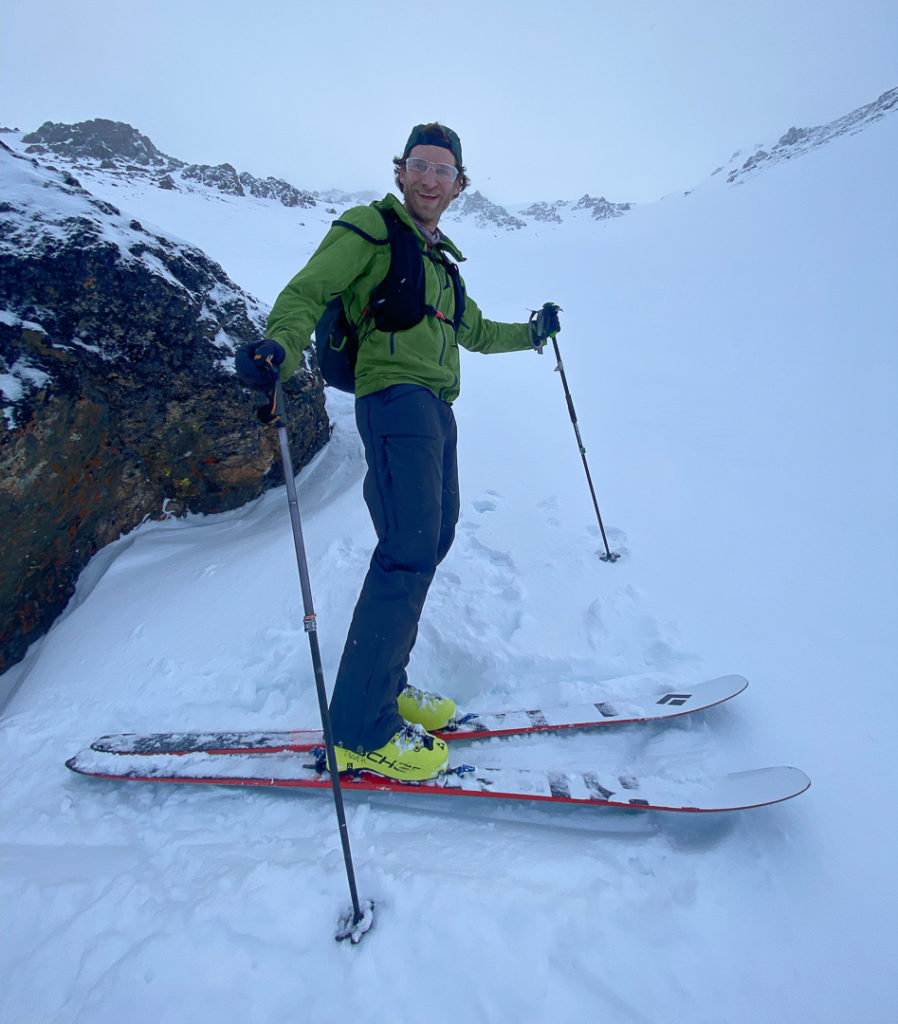
Your typical running vest lacks a waist belt, has some built-in storage resting on your back for some bulkier extra layers, built-in pockets on the shoulder straps (or vest front) to hold 500ml soft flasks and easy-to-grab calories, and a relatively lighter, airy feel compared to an equally sized backpack. The Cirque 22 Ski Vest sports all these features. The ski vest, available since 2020 from BD, isn’t new; it’s just one of those pieces of gear that still shines.
The Feature Set:
Volume: A solid and legit 22 L.
Weight: ~650g size M
Ski Carry: Diagonal carry, removable, with a bungee style/carabiner clip for the tip end of the skis. Functional to sling skis on and off without pack removal. One can rig the ski carry system on the left or right side of the pack.
Axe Carry: Can secure two technical or mountaineering axes to the pack, although the pack comes with a single velcro strap to secure only a single tool’s upper shaft. The picks slot into pick-pockets. (Note: if you’re carrying a second axe, use the noggin and craft a makeshift velcro strap, or use a Voilé or Titan Strap, etc. Or maybe BD can add a second velcro strap to round out this otherwise sweet package.)
Split Main Compartment: The main internal void of the pack can be split into two separate compartments using a zipper closure. When zipped up, it creates an upper section with ⅔ of the volume, with the remaining ⅓ at the bottom. I consider the bottom portion a wet pocket.
Avalanche Tools Sleeve/Pocket: There is a avalanche tool sleeve for a shovel blade, and two side pockets, on the right and left side, respectively. The right side sleeve is a bit short for my shovel handle, whereas my 280cm probe (when extended) fits fine in the slightly longer left side sleeve. Accessing the dedicated pocket and sleeves, at least for me, is slow: I have to unhook the top flap, uncinch the collar, and grab the tools. One downside, IMHO, is the dark interior fabric. I’ve grown accustomed to and prefer light color interior fabrics—it’s easier to see where items are stored.
Small Interior Zip Pocket: Expect to store small essential items here. There’s also a clip sewn to the interior for securing keys. This is not a generously sized pocket—you’ll be storing sunglasses or goggles elsewhere.
Quick Access Skin/Crampon Pocket: That lower portion of the pack is accessed via a zip closure on the right side. We’re not talking about a full side zip, but an easy-to-grab zipper closure that opens wide enough to shove skins in and out, or store and grab a lightweight set of crampons. ( It easily stores both a set of ski crampons and crampons simultaneously. And depending on the skin size, a set of skins and crampons fits too.) The pocket can serve as a true wet pocket as a grommet-reinforced hole is built into the pocket’s base.
With a little shoulder mobility, one can snag and store items in the quick-access pocket without removing the pack.
Materials: The outer fabric is UHMWPE 100d Nylon 4mm Ripstop which looks and feels pretty bombproof. The Cirque 22’s collar extends the volume slightly but not enough to overfill. The collar cinches down with a draw closure, while a flap of the UHMWPE 100d Nylon 4mm Ripstop folds over the top and secures with a hook closure. In a full dump, it’s semi-weatherproof. I would love to see an iteration of a robust ski vest like the Cirque 22 in Dyneema or Ultra 200 Silverado fabric.
Helmet Carry: This standard removable helmet carry connects to the pack front with four points of contact. I often use a Petzl Sirocco helmet, and if I’m going relatively light, I store the helmet inside the pack when not in use.
Vest Utility: Each shoulder strap is equipped with an ample sized zippered pocket large enough for a 500ml soft flask, phone + lots of extras, etc. The pocket’s outer fabric is a stretchy nylon if you overstuff it. Below the zippered pockets are two smaller sleeves with no closures. These are sweet spots to store liner gloves, a buff, extra snacks, or a headlamp. How you utilize the generous storage space on the vest portion of the shoulder straps is up to interpretation. The shoulder straps’ upper portion is reinforced with a semi-rigid thin foam, which helps with support and comfort. As a vest, there is no waist belt. Two adjustable height straps clip across the chest to assist with stability and adjust the load so you can find your comfort zone.
Back Panel: The back panel is relatively minimalist. It is padded with a ~3mm thick foam sheet, and a thin plastic sheet runs along the entire panel to provide some structural integrity—this is not a traditional internal frame. Still, it does provide some shape and rigidity. The back panel also helps with comfort and support when hauling a load between 15-20 pounds; this is likely only the case with a full complement of sharps and heavier skis/skins in the 1400-1600g range.
Scroll through the gallery below to view more images detailing the ski vest’s features.
Cirque 22 Ski Vest Upsides
With the loads I carry with the Cirque 22 Ski Vest, I like not having a waist belt. With normal loads, meaning a liter of water, food for the day, spare mittens, a puffy, and maybe some sharps, the ski vest carries well. That comfort and functionality are not compromised when carrying lighter spring skis like a Blizzard ZG 95 (171cm length weighing ~1350/ski w/bindings). Like any running vest I’ve used, the shoulder straps are not adjustable, so size properly. I’m 5′ 10″, and the medium fits great, whereas the large presents too large a gap where the shoulder strap interfaces with my back. Pull cords connecting the vest’s front and back help dial in load management and fine-tune the sizing.
The 22 liters is generous enough to pack for a long spring outing when temps aren’t expected to dip well below the 25-degree Fahrenheit range. With access to the well-organized and sized front pockets, you’ll be removing your pack less and fueling and hydrating more often (which likely means more effectively) since your essentials are easily accessed.
Unless I’m snagging an extra outer layer, the ski vest stays on, making transitions and your daily ascents and descents more efficient. BD nails it with the ski vest.
The Downsides
If I’m bumping up to carrying a mid-winter all-around or powder ski, the extra weight of the skis/skins/bindings is harder to make comfortable with this ski vest’s more minimal internal support structure. If you are hellbent on big skis (meaning heavy skis with Shifts, Kingpins, or even a ski that bumps beyond the 1600g total weight threshold), you’ll not love the Cirque 22 Ski Vest. But let’s assume that heavier travelers weren’t on the minds of the pack designers.
I know many fit splitboarders who angle towards minimalism—it would be sweet to see a proper board carry available for the vest. As it stands, I think a sewing machine and some design moxy are needed to derive a mod.
Already noted: the dark interior fabric, the single velcro strap for the axe carry, and depending on your probe and shovel shaft model, how these items fit inside the pack is length dependent.
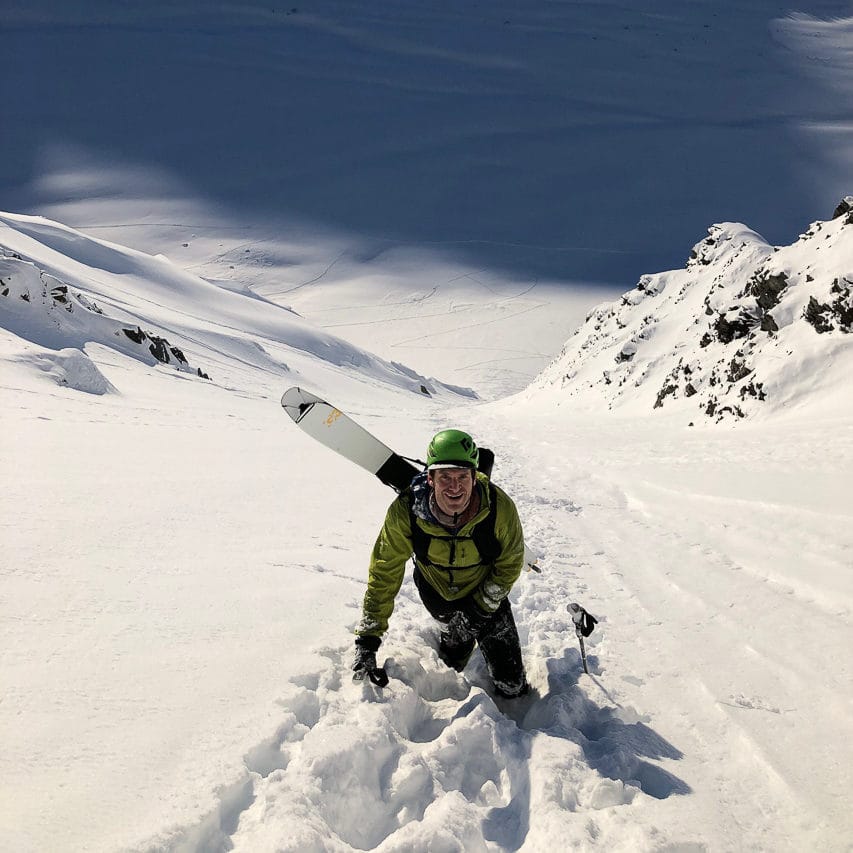
The Close Out
I’ve used several different running vests as ski packs in the past. Before purchasing the Cirque 22 Ski Vest, I swapped between BD’s first-gen running vest-packs (a Distance 8 and Distance 15). The vests have held up and are still in use (as running vests/packs), but they took a beating even carrying lighter ski-mo skis with a custom-rigged ski carry. I’ve had to get creative with the sewing machine to repair one heavily damaged shoulder strap that began to fail since I was carrying too much weight with the skis secured on board (that was probably a bad idea). When a ski-specific BD vest came along, I snagged one. And I don’t regret it.
It’s great for mission-specific tours and on-piste uphill fitness. Much of the winter, when I’m grabbing a higher volume pack, I keep the Cirque 22 Ski Vest prepped with my resort uphill gear, so I’m not moving items from pack to pack. (Most often, I’m not carrying avalanche safety tools at my local resort.)
The cost for the pack is ~$180.00, and I rarely, if ever, have seen it on sale. By the time sale time arrives, they are often out of stock. However, consider the Cirque 22 Ski Vest built with durability and longevity in mind—it’s appropriately reinforced in high-wear zones. Bringing more value to the scene, I can see many folks using this piece for hiking and even some climbing scenarios. Using the ski vest as a four-season go-to is not out of the question. (If you missed it up top, you can remove the ski carry system.) As a running vest, I’d say find something explicitly designed for that purpose; this won’t be a cross-over running vest.
Companies more steeped in the ski-mo scene have designed ski packs/vests for some time—Camp and Dynafit come to mind. But for my tastes, they seem skewed towards very light ski-mo setups, where the ski+bindings run ~1600g-1700g total. I prefer a pack with more substance when carrying the spring setup and the appropriate tools to ascend steep and firm snow. The Cirque 22 Ski Vest arrives with just a bit more structure than a pure race pack, which is an upside for me.
Storage capabilities on the shoulder straps are a win-win while ski touring.
Since 2020, when BD birthed their ski vest, I’ve expected the more traditional ski pack companies to hop on the ski vest bandwagon. Unless I’m missing it, I’m still waiting—high praise for BD’s commitment to the vest concept.

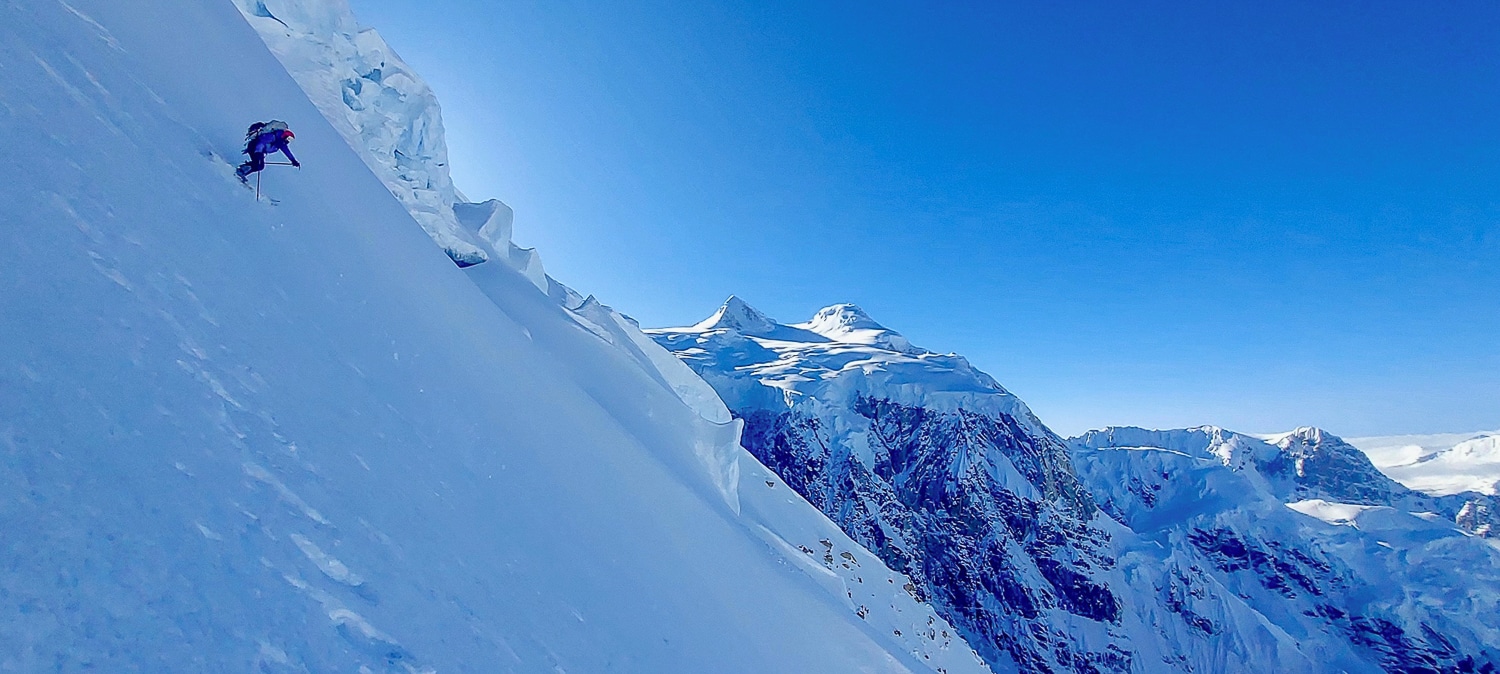
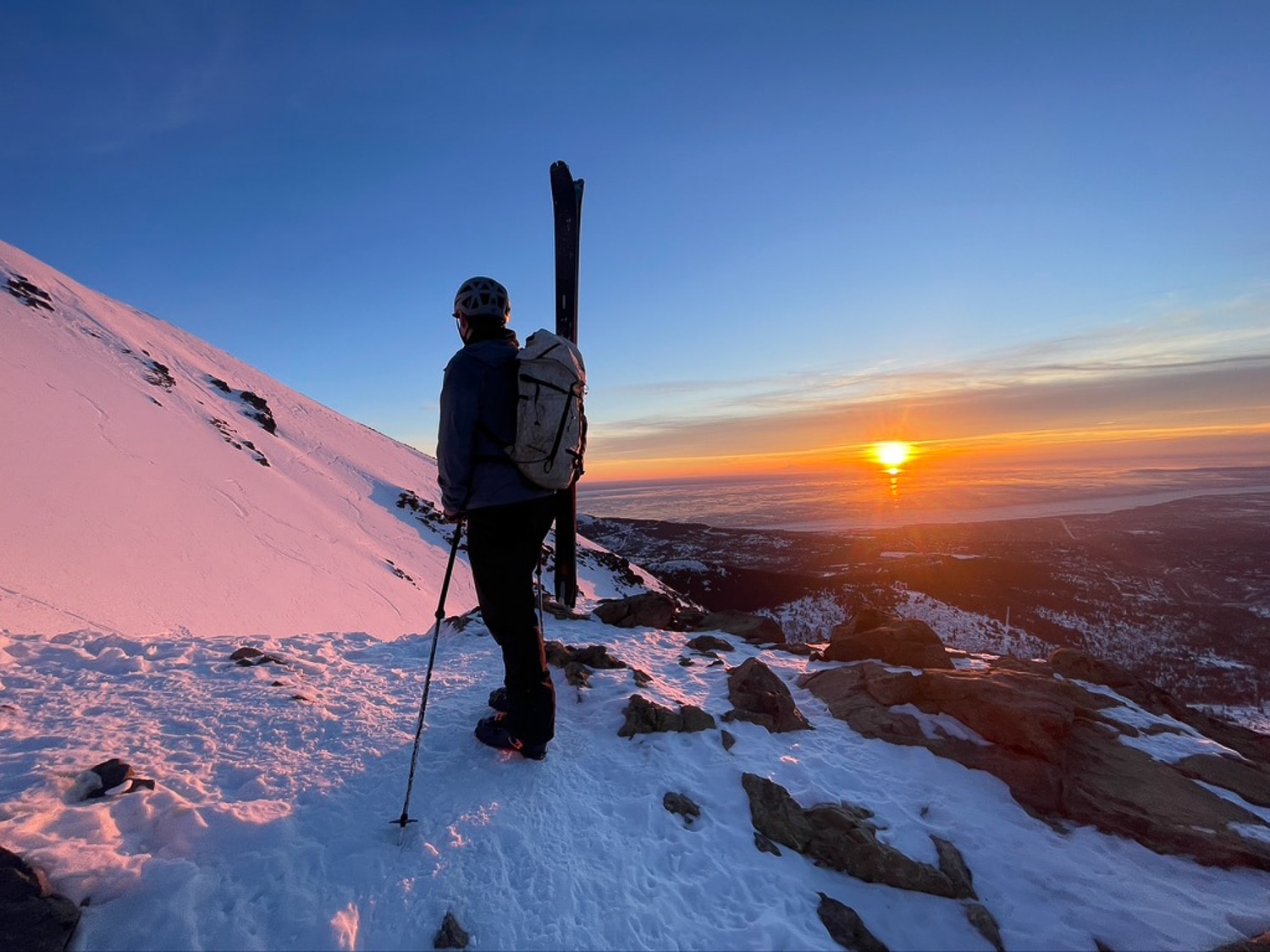
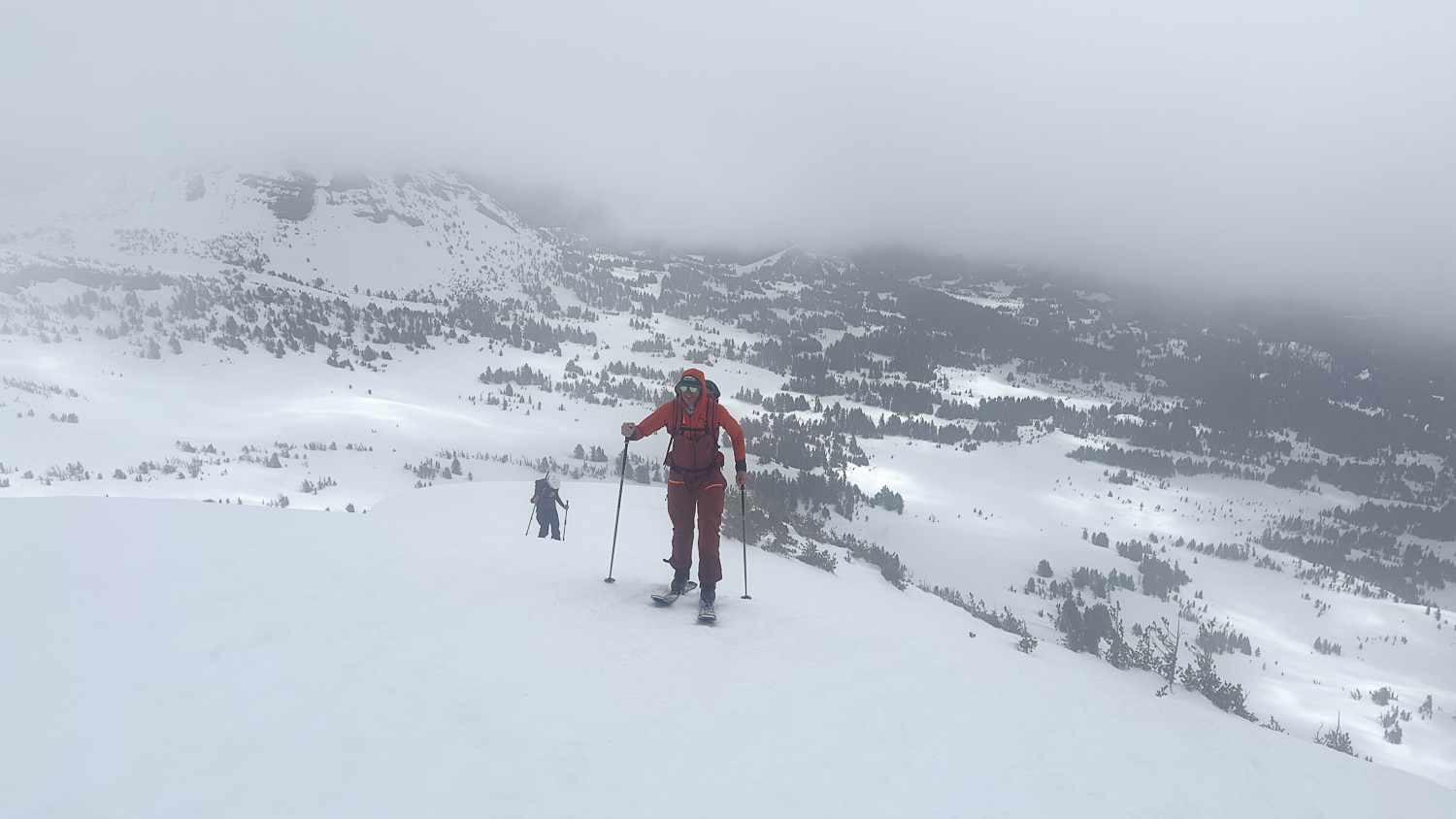
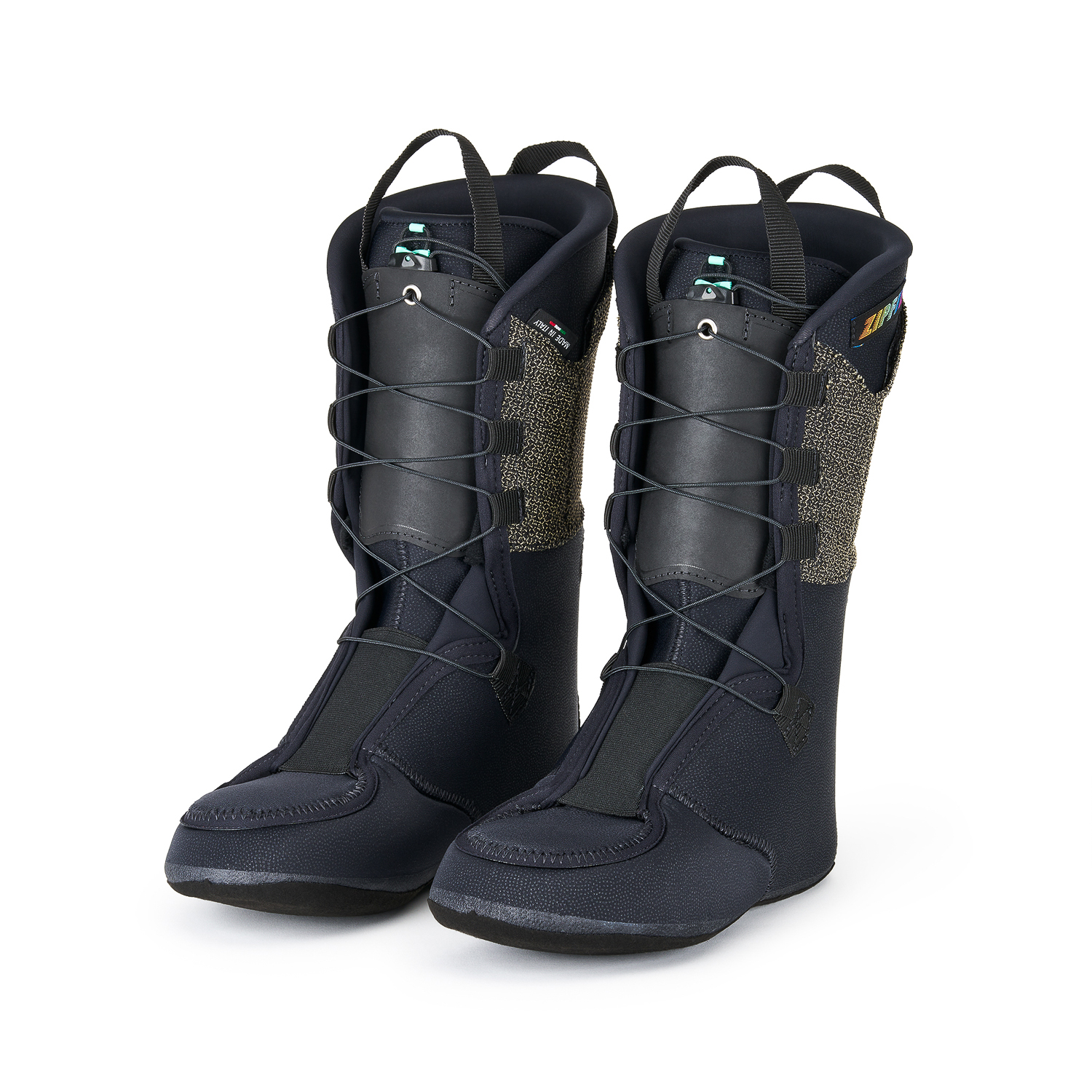
Leave a Reply
You must be logged in to post a comment.